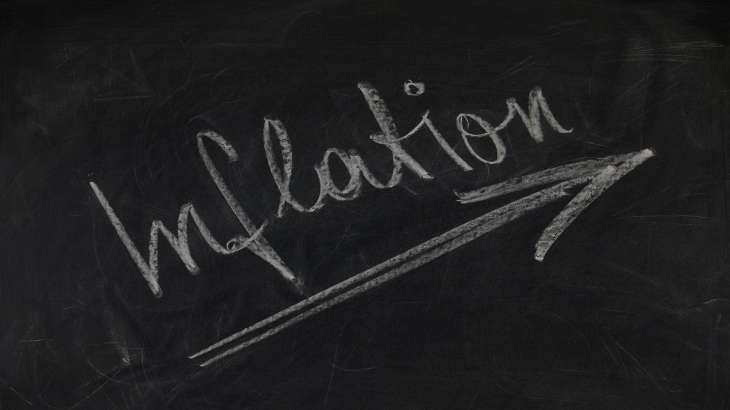
Retail Inflation Rate in India: Retail inflation rose to a three-month high of 4.81 per cent in June, mainly due to hardening of prices of cereals and pulses, though it remained within the Reserve Bank’s comfort zone.
Consumer Price Index (CPI) based inflation has moved north after declining for four months since February. The Reserve Bank of India (RBI), which will announce its next set of bi-monthly monetary policy early next month, will primarily take into account retail inflation while fixing the benchmark interest rate (repo).
Retail or CPI inflation stood at 4.31 per cent (revised from 4.25 per cent) in May and 7 per cent in June 2022. The previous high CPI was 5.66 per cent in March.
NSO Data:
According to data released by the National Statistical Office (NSO), inflation in the food basket stood at 4.49 per cent in June, higher than 2.96 per cent in May. The food basket accounts for about half of the CPI.
The data showed that the annual rate of price increase was 19.19 per cent in case of spices, 12.71 per cent in ‘cereals and products’, 10.53 per cent in ‘pulses and products’ and 7 per cent in eggs. Fruits also remained slightly costlier in June year after year.
However, inflation decelerated in ‘Oils and Fats’ (-18.12 per cent) and Vegetables (-0.93 per cent). Commenting on the data, Aditi Nair, chief economist, head-research and outreach, ICRA, said the rise in vegetable prices would make CPI inflation an uncomfortable 5.3-5.5 per cent in July 2023.
“We expect CPI inflation to exceed (RBI’s) Monetary Policy Committee’s final forecast of 5.2 per cent in Q2 FY2024 as a result of the vegetable price shock.” will retain its dovish tone, keep the repo rate unchanged and indicate that the pivot to a rate cut is still far away,” he said.
Commodity Participants Association of India (CPAI) national president Narinder Wadhwa said the rise in inflation suggests a possible change in factors affecting consumer prices.
“This could be influenced by various factors such as changes in demand-supply dynamics, volatility in global commodity prices, government policies or other economic factors. The rise in inflation is higher than the Street’s expectations,” he added.
The government has tasked the central bank to ensure that retail inflation remains at 4 per cent with a margin of 2 per cent on either side. Last month, the Reserve Bank had kept policy rates unchanged at 6.5 per cent and projected retail inflation to average 5.1 per cent for the current fiscal, from 4.6 per cent in the June quarter.
The NSO data showed that inflation was 4.72 per cent in rural India and 4.96 per cent in urban India. However, food inflation in rural areas was slightly higher than the national average.
Price data is collected from selected 1,114 urban markets and 1,181 villages covering all states and union territories through personal visits by field staff of Field Operations Division of NSO in the Ministry of Statistics and Program Implementation (MoSPI) on a weekly roster.
Provisional index number of vegetables increased:
The provisional index number for vegetables rose to 180.6 in June from 161.0 in May, according to data from the Ministry of Statistics and Program Implementation released today. The weight of vegetables on overall retail inflation is 6 per cent. The rise in inflation can be partly attributed to the current spurt in tomato prices across India. The rise in tomato prices has been recorded across the country and not limited to any particular region or geography. It increased to Rs 150-160 per kg in major cities.
Amid a sharp jump in tomato prices across the country, the central government on Wednesday directed its agencies – NAFED and NCCF – to immediately procure the staple vegetable from mandis in major producing states like Andhra Pradesh, Karnataka and Maharashtra. In addition to vegetables, meat and fish; eggs; pulses and products; Spice indices also saw a rally.
Notably, retail inflation (consumer price index) in India rose to 7.8 per cent in April 2022, owing to a decrease in food and core inflation. In some advanced countries, inflation had actually touched a multi-decade high and even crossed the 10 per cent mark. RBI’s consistent monetary policy tightening from mid-2022 can be attributed to the substantial decline in inflation numbers in India. India’s retail inflation was above the RBI’s 6 per cent target for three consecutive quarters and managed to come back to the RBI’s comfort zone only in November 2022.
Under the flexible inflation targeting framework, if CPI-based inflation is outside the 2-6 per cent range for three consecutive quarters, the RBI is considered to have failed to manage price increases. Barring the recent hiatus, the RBI has hiked the repo rate by a cumulative 250 basis points from May 2022 in the fight against inflation. Raising interest rates is a monetary policy tool that usually helps to suppress demand in the economy, thereby helping to bring down the inflation rate.
(with inputs from agencies)
Read also: India’s retail inflation eases to two-year low of 4.25% in May
Read also: UPI to account for 90% of retail digital payments by 2026-27: Report